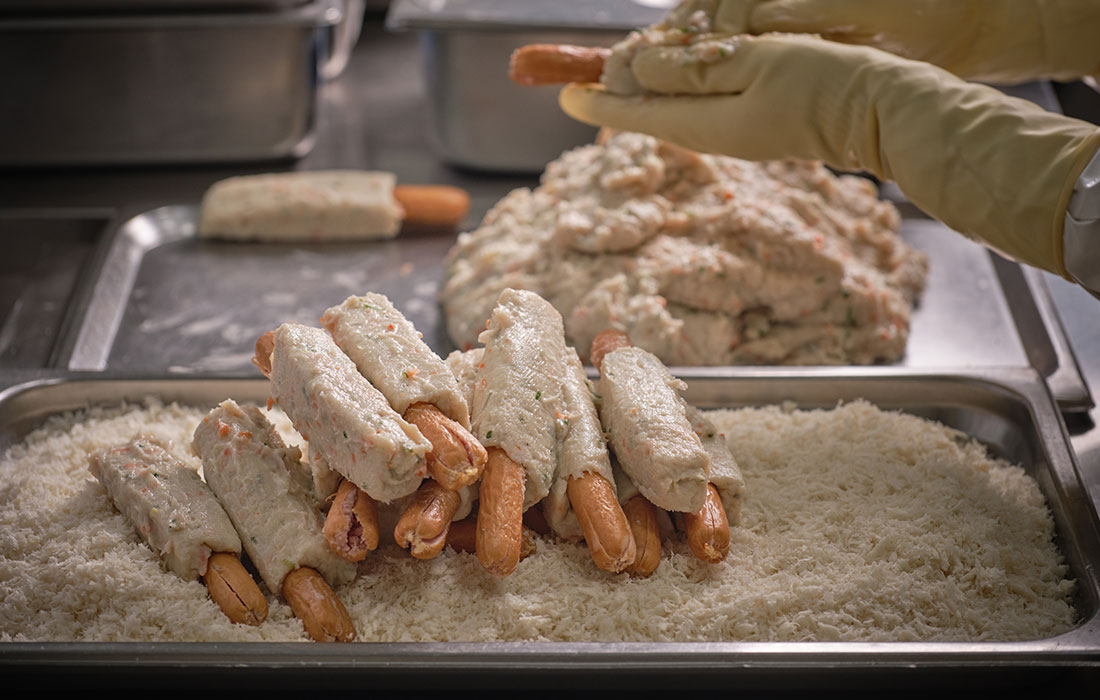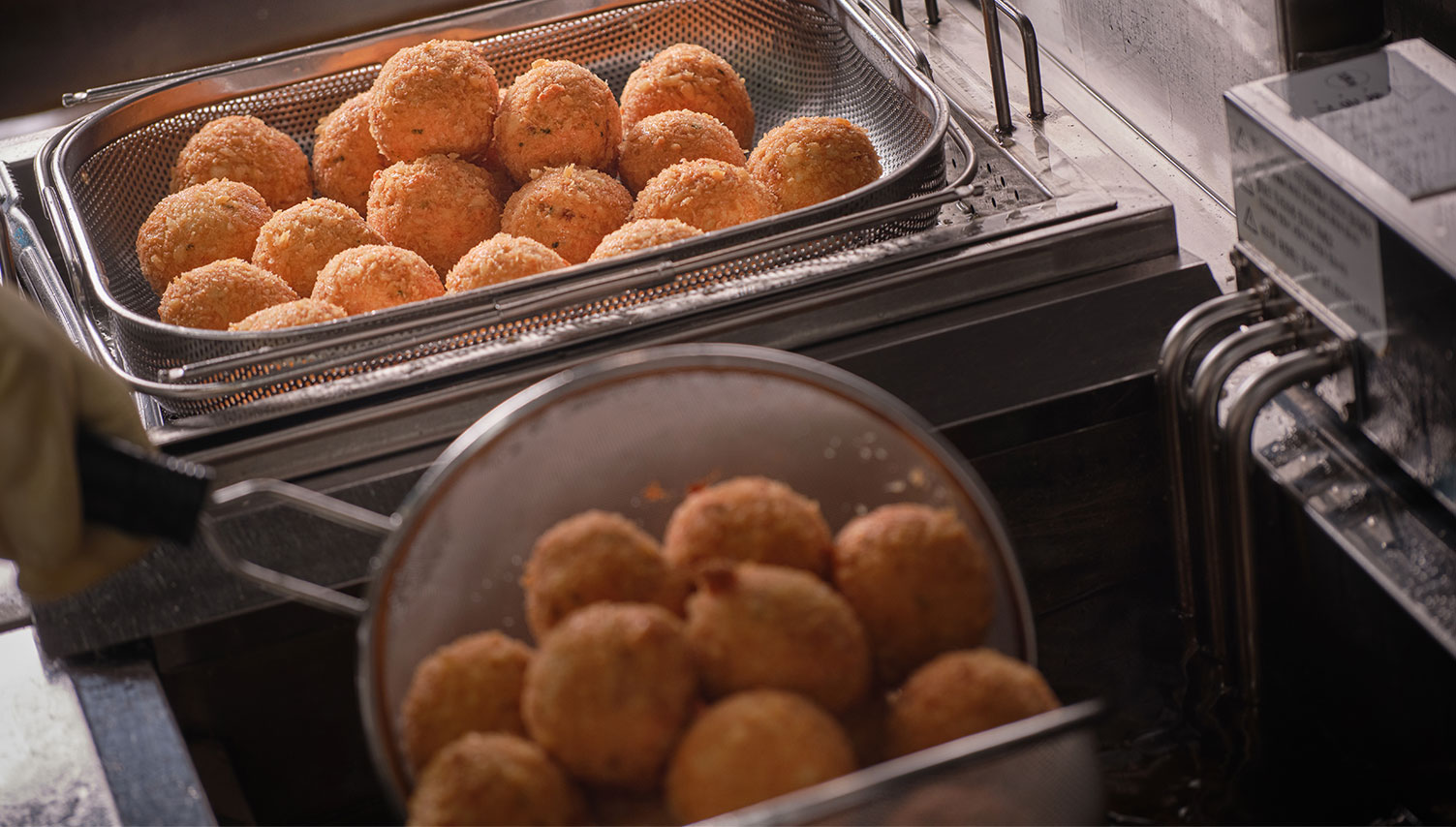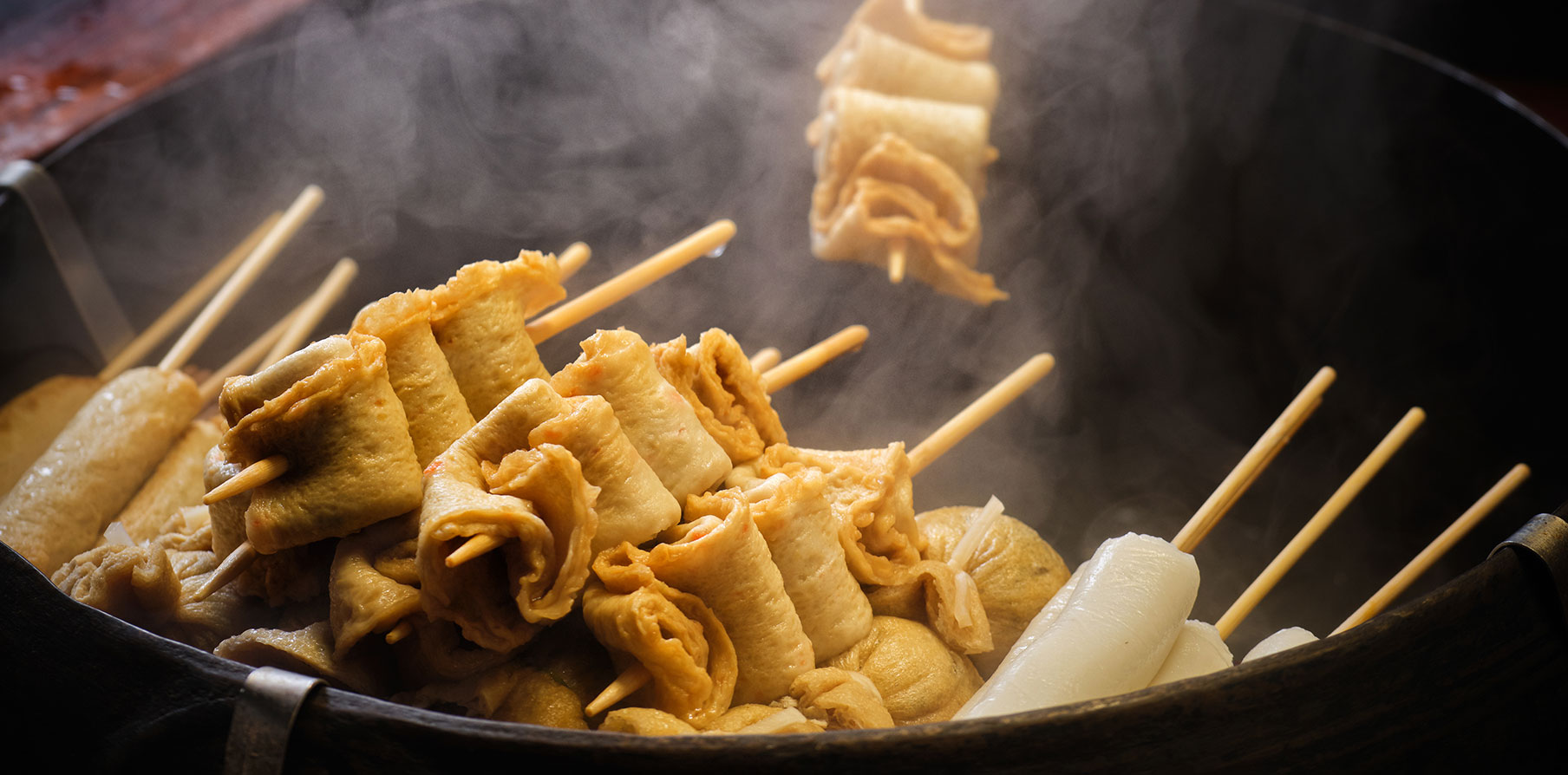Flavor
Fabulous Fish Cake
Eomuk
Eomuk (fish cake) is an iconic wintertime delicacy in Korea. A popular street food whose national place of origin and base is Busan, this quick bite is an effective way to fend off the cold.
Written by
• Kim Jane
Photographed by• Studio Kenn
Reprocessed and pureed white fish called surimi has existed in other parts of the world such as Japan, China, Europe and parts of the Western Hemisphere. Oftentimes, the fish chunks were combined with flour and finely chopped vegetables. In Japan from the 14th to 16th centuries, roasted eomuk skewers were dubbed kamaboko. In China during the Qing Dynasty (1644-1912), the food is said to have been prepared for Emperor Qin Shi Huang, who had a liking for fish. The U.S. and Europe have also had variants that are usually called fish balls.
The early origins of eomuk in Korea can be traced back to the 1719 publication Jinyeoneuigwe (Historical Records of the Palace), which mentions thinly sliced fish meat. According to an account of dining culture during the Joseon Dynasty (1392-1910), the food was “made with ground-up fish meat, mixed with starch, sesame oil and soy sauce, then steamed and molded into chunks. These are then flattened and dipped in soy sauce topped with pine nuts.” This recipe closely resembles how eomuk is cooked and consumed in present-day Korea.
Post-war Emergence

Fried eomuk batter is molded for easy portability.
Fried eomuk batter rose to popularity on the Korean Peninsula after the Korean War. The main ingredient fish provided a hearty and protein-rich quality to the tasty yet quick snack, allowing survivors of the war to avoid starvation. Novellas like Kim Dong-ri’s “Liberation” (1949) and Kim Seungok's “Seoul-1964-Winter” (1965) depicted the dish's role throughout the turbulence of modern Korean history.
Today, eomuk remains popular in Korea through a wider variety of forms and flavors. Shapes include square, cylindrical, round or hole (the Japanese type) and flavors include spicy (red), cheese or ingredient infused, with classic toppings including sesame leaves, sausages, shrimp, chili, squid, rice and japchae (glass noodles).
The expanded variety has diversified the methods of cooking and preparing eomuk, like fried versions served alongside tteokbeokki (spicy rice cake) or stir-frying it to complement other vegetable side dishes. Forms of eomuk-infused snacks include croquettes and eomuk jeon (pancake). Other variations include finely chopping eomuk into japchae or adding it to kimchi jjigae (stew). Certain spicy broths also feature eomuk, and even on its own, eomuk tang (fish cake soup) is considered a great complement to the traditional liquor soju.

Street food kiosks (pojangmacha) often have customers holding eomuk skewers.
Birthplace & Future
Busan is Korea’s most famous region for eomuk, with the nation’s first factory for the food as well as its oldest both found here. According to the Bupyeong Market Monthly in 1915, the market, the nation’s first in a municipality, had three eomuk stores. In 1945, Dong Kwang Foods became the first Korean entity to set up eomuk factory. And the nation’s oldest surviving eomuk plant owned by Samjin Eomuk also originated in Busan’s Youngdo-gu District.
Though advanced manufacturing systems have enabled production wherever desired, the country’s largest port city teems with fish of far higher quality than most other regions. The city’s eomuk also consists of a greater percentage of fish meat, reaching upwards of 70% compared to the conventional 50-60%. Some of the region’s factories even boast “high-grade” eomuk made of over 90% meat.
Much about Busan attests to its status as the national hub of eomuk. Baked goods and teabags utilizing the fish cake are available online, which has resulted in more accessible variants through diversified distribution. Exports are also growing, with last year’s figure exceeding USD 55 million according to the Ministry of Oceans and Fisheries.

Round and breaded versions of fried eomuk resemble confectionary goods.



















